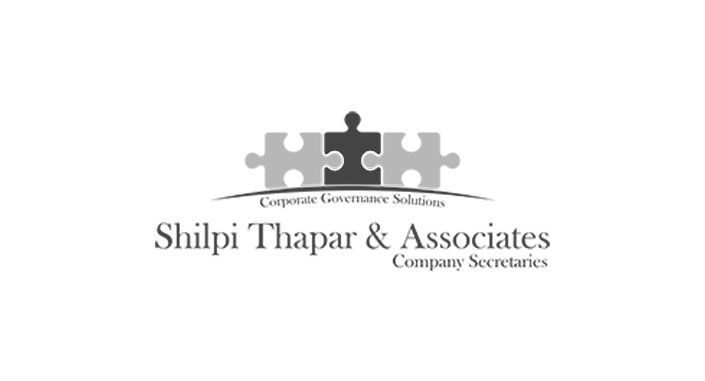Posted by: CS Shilpi Thapar
A popular joke about lawyers asks, ‘What do you get if you cross the Godfather with a lawyer?’ Such is the confusion often sown into the minds of lay clients by a consideration of legal documents that the response to the question should come as no surprise: ‘A man who makes you an offer you can’t understand’. Legal drafting has often been the source of amusement.
The typical product of drafting is a document embodying an agreement or accord between parties, often separately advised and represented, and intended to regulate the legal relationship between those parties. A well-drafted document should marry together the relevant facts and law in a clear and concise manner and encapsulate the final agreed instructions or negotiations.
The drafting of documents should be following manner so as to:
(1) meet the client’s goals, carry out the client’s instructions and address the client’s concerns;
(2) maintain a standard of care which protects the interests of the client;
(3) deal appropriately with client care and professional conduct issues;
(4) accurately address all the relevant legal and factual issues;
(5) where appropriate, identify relevant options, including the costs, benefits and risks of those options;
(6) where appropriate, demonstrate a critical use of precedents;
(7) are logically organised;
(8) form a consistent and coherent whole;
(9) follow the rules of grammar;
(10) demonstrate appropriate use of language;
(11) are succinct and precise;
(12) meet any formal legal or other requirements.
Preparing to Draft Legal Documents?
1. Importance of Preparation: As with any other lawyerly skill, preparation is essential to successful drafting. Unlike advocacy or negotiation, it is true that you will have the option to reconsider your document before presenting it for public consumption. However, it is certainly true that drafting legal documents without adequate preparation the document will take longer to draft and is likely to omit important matters.
2. Identify the client’s goals, concerns, and instructions: All documents produced by a lawyer are produced in order to carry out a client’s instructions. The professional must work out with the client what needs to be done, applying legal knowledge and skills to the client’s business or personal situation. As with any work, it is important to check that instructions have been given by the appropriate person. Does an employee have the authority to instruct you? Is the person instructing you to deal with property the legal owner of the property? If not, make sure the instructions are checked with the appropriate person or people.
It is also always necessary to consider whether the instructions can be accepted at all. If you were to prepare the document, would there be a conflict with an existing client’s interest? Is the document you are being instructed to prepare illegal? You must of course consider whether you can accept the instructions in light of professional conduct rules.
When taking instructions, do not assume that the person instructing you knows the law. Your job is to arrive at the correct legal solution to the client’s problem. You may appreciate that there may be more than one solution, and you must identify with the client primary goals and concerns.
Before drafting it may be desirable to make a site visit. Especially in relation to complex commercial property matters it is of enormous assistance to do this so that you know the layout of the land when drafting a lease or agreement. It may also be beneficial to the professional drafting commercial agreements to visit the client’s business to form a clearer view of it. The cost of making a site visit should be agreed with the client beforehand.
3. Analyse all the relevant legal and factual issues: You must assimilate and analyse the actual factual context according to your instructions. Only then can you formulate a clear idea of what the draft document should contain. Before setting pen to paper (or more likely settling down with keyboard and mouse in hand), consider your instructions. Are they clear to you? What is the objective of the draft? If it is a contract, can you identify the parties, the consideration, the obligations of each party, any conditions, warranties and representations, any provisions which take effect after a breach of contract and any other material matters on which you have instructions?
If there are gaps, ask yourself why there are gaps. Will they be filled by other documents? Are they matters which neither you nor your client have considered? Do you need further instructions? If you conclude that you need further instructions, consider whether they are necessary before you can prepare the first draft or whether you can produce a draft and afterwards ask your client to fill in the missing piece.
Equal importance should be afforded to consideration of the law affecting the agreement
to be prepared. Are there any restrictions to what is being proposed? Check up by researching the texts and original sources. Has the law altered recently? Using precedents as a base is no safeguard if they are out of date. Taxation is an obvious area where the law is always changing. Is what is proposed tax-efficient or should the client’s affairs be ordered in a different manner?
4. Where appropriate, identify any options: Preparatory analysis of the law and the facts may well reveal that there are alternative ways of dealing with the matter. The primary goal must be to achieve what the client wishes in a legal context. However, if this can be achieved in various ways, consider adopting an option which saves on stamp duty, or one which may be tax-efficient, or one which saves costs.
5. Precedents: Precedents can be very helpful in drafting, but they must be used with care. A precedent should be seen as a checklist against which you ensure your draft does not omit material matters. A precedent is not a replacement for a professional. It should not be merely copied without thought.
6. Responsibility for drafting: When drafting an agreement between two or more parties it is necessary to establish which party will be responsible for producing the first draft. In some common transactions there are conventions:
(a) In conveyancing, the seller’s solicitor will usually prepare the draft contract, whilst the buyer’s solicitor will prepare the draft conveyance or transfer.
(b) In share purchase transactions, normally the purchaser’s solicitor will prepare the agreement and deed of indemnity and, by incorporating various warranties, require disclosure by the vending shareholders.
(c) In a leasehold context, it will be the landlord’s solicitor who will prepare the lease and any licences.
In other matters the parties should agree where the responsibility for the production of the first draft lies.
7. Getting down to drafting: Once your preparation is complete, you can begin to draft. Before drafting substantively, you should prepare a skeleton of the agreement to ensure that you do not omit any material facts or legal points. Where there are complex factual or legal questions, a skeleton will enable you to see the coherent and logical whole at the outset.
8. Appearance, style and content of the draft: Print your draft double-spaced on A4 paper. Leave a generous margin each side, and at the top and bottom. This profligacy in paper will be seen as worthwhile when the ease of making amendments is contrasted with the prospect of amending a document submitted in single spacing.
It is very important that the drafting should be consistent and logical. Drafting of documents especially agreements should be proper format.
Checklist of clauses of legal documents:
(a) date;
(b) specifi cation that this is a deed;
(c) names and addresses of everyone signing;
(d) necessary defi nitions;
(e) consideration, payment and receipt;
(f) main agreement;
(g) warranties, conditions, covenants;
(h) boilerplate clauses;
(i) signature clauses;
(j) schedules;
(k) plans.
9. In event of dispute: A good agreement should be watertight to prevent litigation. Even if it is, this is no bar to litigation. Often, the litigation may take place many years after the agreement was negotiated.
To be able to deal with litigation when it occurs, make sure at the time of drafting that your file is in good order. Keep
(a) your first draft and any precedents you used as a basis;
(b) the first word-processed draft;
(c) a draft incorporating your client’s comments;
(d) the draft as submitted to the other side;
(e) the travelling draft with all comments or amendments;
(f) all word-processed versions as redrafted;
(g) the final version as approved by your client; and
(h) a photocopy of the completed document.
10. Use of Grammar and Language: Drafting and legal writing depend on written communication, which relies upon the written word solely to convey meaning. Words written on paper require interpretation and if the interpretation is open to ambiguity there may be potential for dispute. Part of the lawyer’s drafting skill is to ensure the document prepared means what the client has instructed the lawyer to prepare.
11. Engrossment and Completion: The document will come into effect once it has been completely executed and dated. Professional should keep a photocopy on their file for record or make up their engrossment file copy by filling in the date and details of the signatures. A copy should also be sent to the client, especially if the original is to be held elsewhere than by the client. Do not omit to deal with any post-completion matters promptly. These include payment of stamp duty, registration with the appropriate registry, or filing at court. Hence, professional should:
(a) Carefully proofread the final draft before engrossing.
(b) Ensure that the document is appropriately engrossed and bound.
(c) Be clear about who signs the document when and where.
(d) Keep a copy of the completed document.
To conclude ‘The aim of the legal document is the use of such words and grammar as are necessary to achieve a stated, preconceived goal: to capture the common intention of the parties in a manner enforceable through law.’ This is the essence of task of professional as a skilled drafter and in striving for clarity or plain English, understanding or originality, style or form; one must not lose sight of the ultimate objective.”
Just as with any lawyerly skill, any professional will profit from his experience, gain confidence and find a style and rhythm of his own.
(References: Online legal articles, legal periodicals and books)



Leena Surjiani
July 26, 2012 at 12:19 am | |Very Useful explanation..